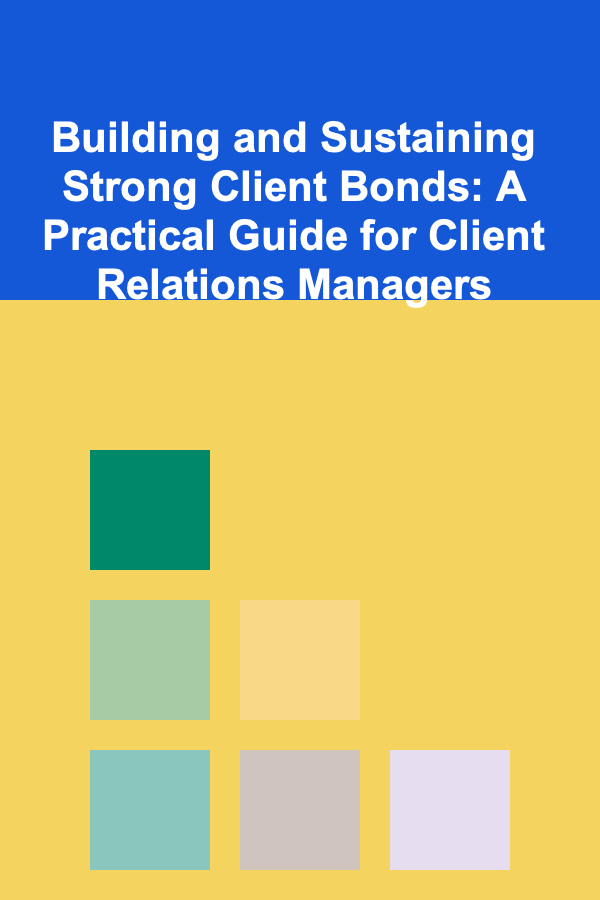
How to Create a Checklist for Email Marketing Event Promotion
ebook include PDF & Audio bundle (Micro Guide)
$12.99$11.99
Limited Time Offer! Order within the next:

Email marketing is one of the most effective tools for promoting events, whether it's a webinar, conference, product launch, or community event. A well-executed email campaign can help you generate excitement, increase registrations, and ensure the success of your event. However, to achieve the best results, it's crucial to approach your email marketing campaign strategically and methodically. This is where a checklist for email marketing event promotion comes into play.
In this guide, we'll explore how to create a checklist that will help you cover every important aspect of your event's email marketing campaign---from planning and list segmentation to design and post-event follow-ups. By the end, you'll have a comprehensive plan that you can use for future event promotions.
Define Your Event Goals
Before diving into the technical aspects of email marketing, you need to establish clear goals for your event. These goals will serve as the foundation for your entire email marketing strategy. Your goals should be specific, measurable, and time-bound. Here are some examples of event goals:
- Increase ticket sales or registrations: Aim for a specific number of tickets or sign-ups.
- Build brand awareness: Use the event as an opportunity to grow your brand's reach and visibility.
- Drive post-event engagement: Promote content that will keep attendees engaged even after the event concludes.
Having a solid understanding of your goals will help you tailor your emails to resonate with your target audience and ultimately achieve success.
Actionable Tips:
- Identify the primary outcome you want from your event---such as how many people you aim to attend, the amount of revenue you want to generate, or the overall awareness you want to create.
- Set specific deadlines for when these goals should be achieved (e.g., ticket sales or registrations should reach 80% of the target one week before the event).
Segment Your Email List
Not all recipients of your emails will have the same interests, needs, or level of familiarity with your event. To maximize engagement, it's essential to segment your email list and send tailored messages to different groups of subscribers. Segmentation helps ensure that each recipient receives relevant content and increases the chances of a positive response.
Key Segments for Event Promotion:
- Current customers or attendees: Send a personalized message to people who have attended past events or made purchases.
- Potential leads or prospects: Create targeted campaigns for individuals who have shown interest but haven't yet registered or purchased tickets.
- VIPs or influencers: If you have influencers or top-tier customers, send them special invitations or offers.
- Geographical segments: For local events, segment your list by location to target attendees in the event's vicinity.
Actionable Tips:
- Use your email marketing platform's segmentation tools to filter your list based on criteria such as purchase history, engagement, location, etc.
- Create custom fields in your subscriber profiles to track preferences and behavior, making it easier to send personalized event invitations.
Craft the Email Content
Now that you've defined your goals and segmented your list, it's time to focus on the content of your email. The goal of an event promotion email is to capture attention, provide valuable information, and encourage recipients to take action. To achieve this, your email should be clear, compelling, and concise.
Key Elements to Include in Event Promotion Emails:
- Engaging Subject Line: A strong subject line is essential to getting your email opened. It should be concise, exciting, and create curiosity or urgency. For example, "Don't Miss Out---Register for [Event Name] Now!"
- Clear Event Details: Ensure that the email contains all necessary information about the event, including date, time, location (or virtual details), and what attendees can expect.
- Compelling Call-to-Action (CTA): Use a prominent, action-oriented CTA like "Register Now," "Get Your Tickets," or "Join the Event."
- Social Proof and Testimonials: If applicable, include testimonials from previous attendees or notable speakers to increase credibility.
- Personalization: Address recipients by name and tailor the content based on their past interactions with your brand.
Actionable Tips:
- Use A/B testing for subject lines and CTA buttons to see what resonates most with your audience.
- Keep the body copy concise and to the point---highlight the benefits of attending and what makes your event unique.
Design Visually Appealing Emails
The design of your email plays a significant role in how recipients perceive your event and brand. A visually appealing email can enhance engagement and make the message stand out in a crowded inbox. Here are some design best practices for event promotion emails:
- Mobile Optimization: Ensure your emails are responsive and look good on mobile devices. A large portion of your audience will read your emails on smartphones.
- Branded Visuals: Use consistent colors, fonts, and logos to make sure your email reflects your brand's identity.
- Event Imagery: Use high-quality images related to the event, such as speaker photos, event graphics, or venue pictures. Visuals can help create excitement and give a preview of what attendees can expect.
- Clear Layout: Organize the email with headings, bullet points, and white space to make it easy to read. Don't overwhelm the recipient with too much information at once.
Actionable Tips:
- Use an email builder tool that provides pre-designed templates for event promotions, ensuring your emails are visually appealing and professionally formatted.
- Include buttons or links to event pages or registration forms within the email to make it easy for readers to take the next step.
Plan Your Email Sequence
Event promotion is not just about sending one email---it's about building anticipation and staying top of mind with your audience. An effective email marketing campaign typically involves a series of emails sent over a period of time. Here's a breakdown of an effective email sequence:
- Initial Announcement: Send an email to introduce the event, provide key details, and include a CTA for early registration or ticket purchase.
- Reminder Emails: As the event date approaches, send reminder emails with countdowns or new details (such as added speakers, updated agenda, or limited-time offers).
- Last-Minute Emails: One or two days before the event, send a final reminder email urging recipients to register or attend.
- Post-Event Follow-up: After the event, send a thank-you email, share highlights, and invite attendees to future events or offer exclusive content.
Actionable Tips:
- Automate your email sequence using an email marketing platform like Mailchimp, HubSpot, or ActiveCampaign. Set specific sending intervals and content based on your event's timeline.
- Use urgency and scarcity tactics in your emails as the event approaches, such as limited-time offers or countdowns to create a sense of urgency.
Test and Optimize Your Emails
Before launching your email campaign, it's important to test and optimize your emails to ensure they perform well. Testing allows you to catch any potential issues, from broken links to low open rates, before you send emails to your entire list.
Key Elements to Test:
- Subject Lines: Test different variations of subject lines to see which generates the highest open rate.
- Call-to-Action (CTA): Test different CTA wording, placement, and colors to find out which version drives the most conversions.
- Email Copy and Design: A/B test different email designs and content layouts to determine what resonates with your audience.
- Send Time: Experiment with sending emails at different times of the day or week to find when your audience is most likely to engage.
Actionable Tips:
- Set up A/B tests for different email variations (subject lines, CTAs, etc.) and track metrics like open rate, click-through rate (CTR), and conversion rate.
- Use analytics tools to measure the performance of each email and adjust your strategy accordingly.
Track Key Metrics and Analyze Performance
After your emails have been sent, it's crucial to analyze their performance to determine what worked and what could be improved. The insights gained from tracking key metrics will help you optimize future campaigns.
Key Metrics to Track:
- Open Rate: The percentage of recipients who opened your email. This metric indicates the effectiveness of your subject line and audience targeting.
- Click-Through Rate (CTR): The percentage of recipients who clicked on a link or CTA in the email. This helps you measure engagement and the effectiveness of your content.
- Conversion Rate: The percentage of recipients who completed the desired action, such as registering for the event or making a purchase.
- Bounce Rate: The percentage of emails that didn't reach the recipient's inbox. High bounce rates may indicate issues with email deliverability.
Actionable Tips:
- Use your email platform's analytics tools to track the performance of each email.
- Adjust your strategy based on the results---if certain subject lines or CTAs performed poorly, change them for the next campaign.
Conclusion
Creating an effective checklist for email marketing event promotion involves careful planning, segmentation, content creation, testing, and optimization. By following the steps outlined in this guide, you'll be able to build a robust email marketing campaign that maximizes engagement and drives the success of your event.
Remember, email marketing is an ongoing process that requires constant refinement and adjustment. By analyzing your results and iterating on your strategy, you can continuously improve your campaigns and achieve better outcomes for future events.
Reading More From Our Other Websites
- [Personal Financial Planning 101] How to Teach Kids About Money and Financial Responsibility
- [Home Pet Care 101] How to Create a Pet Safety Plan for Emergencies at Home
- [Organization Tip 101] How to Organize Your Vinyl Collection for Easy Access
- [Home Staging 101] Home Staging for Luxury Homes: How to Stage Luxury Homes
- [Home Holiday Decoration 101] How to Use Metallic Accents in Your Holiday Decor for Extra Glam
- [Beachcombing Tip 101] Eco‑Friendly Beachcombing: Collecting and Preserving Coastal Treasures Responsibly
- [Digital Decluttering Tip 101] The Ultimate Guide to Backing Up Your Digital Files: Tools, Tips, and Best Practices
- [Personal Care Tips 101] How to Use Sunscreen on Different Skin Tones and Types
- [Gardening 101] Designing a Native Plants Garden: Tips for Success
- [Personal Care Tips 101] How to Exfoliate Your Skin with a Facial Scrub Before a Big Event

Building and Sustaining Strong Client Bonds: A Practical Guide for Client Relations Managers
Read More
How to Stage Your Home When You Have Minimal Furniture
Read More
Show, Don't Tell: How to Stand Out by Demonstrating Your Value
Read More
Understanding the Psychological Impact of Virtual Reality
Read More
Printable Masks for Fantasy Characters: How to Bring Them to Life
Read More
10 Tips for Integrating Mindfulness into Your Healthy Habits Planner
Read MoreOther Products

Building and Sustaining Strong Client Bonds: A Practical Guide for Client Relations Managers
Read More
How to Stage Your Home When You Have Minimal Furniture
Read More
Show, Don't Tell: How to Stand Out by Demonstrating Your Value
Read More
Understanding the Psychological Impact of Virtual Reality
Read More
Printable Masks for Fantasy Characters: How to Bring Them to Life
Read More